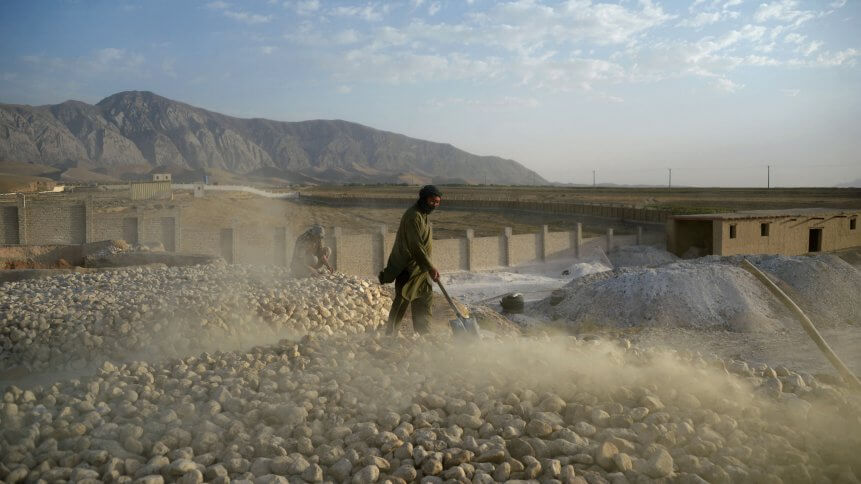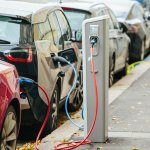Is Afghanistan’s US$1 trillion of mineral deposits the key to the climate crisis?

- In 2010, US military officials and geologists revealed that Afghanistan was sitting on mineral deposits worth nearly US$1 trillion
- The country is also home to the world’s largest reserves of lithium — the critical component in numerous industrial applications including batteries for energy-efficient vehicles
- The minerals trove has the potential to dramatically transform the war-torn nation’s economic prospects
As countries attempt switching to electric cars and other cleaner technologies in bids to slash carbon emissions, the demand for metals like lithium and cobalt, as well as rare-earth minerals are soaring. And of all places, Afghanistan — which just experienced a swift fall to Taliban fighters two decades after the US invaded the country — happens to have the world’s largest reserves of mineral deposits.
Afghanistan’s considerable reserves of rare-earth metals includes the world’s largest lithium deposits, cementing its unwary domination of the market for these crucial minerals. The country has large reserves of lithium, neodymium, silver, gold, mercury, and other valuable elements, according to Ahmad Shah Katawazai, a former diplomat at the Afghan Embassy in Washington D.C..
He said rare earth elements in the country were estimated to be valued between US$1 trillion and US$3 trillion last year. Recalling an internal Department of Defense memo in 2010, Afghanistan was dubbed as the “the Saudi Arabia of lithium,” the key raw material in the manufacture of batteries for mass electronic goods ranging from laptops to smartphones and even electric vehicles (EVs). The US government has reportedly estimated that lithium deposits in Afghanistan could rival those in Bolivia, home to the world’s largest known reserves.
To put things into perspective, the estimated value of the mineral deposits dwarfs the size of Afghanistan’s present war-bedraggled economy — Afghanistan’s gross domestic product is only about US$19 billion, based largely on opium production and narcotics trafficking, as well as dependent on aid from the US and other industrialized states.
Dire need for more mineral deposits
Lithium is the lightest metal on earth, and an essential but tough-to-obtain component in rechargeable batteries and other technologies vital to tackling the climate crisis. And fresh off this latest war, it appears Afghanistan might possess the precious metals needed for the emerging economy of the 21st century.
Lithium is not a rare metal. In fact, there’s plenty of it, but it’s tucked away in the earth’s crust. Unlike the extraction of gold, copper or iron, exploiting lithium and rare earth minerals requires much greater investment and technical know-how, as well as time. The International Energy Agency (IEA) estimates that it takes 16 years on average from the discovery of a deposit for a mine to start production.
The IEA also said back in May that global supplies of lithium, copper, nickel, cobalt, and rare-earth elements need to increase sharply, or the world would fail in its attempt to tackle the developing climate crisis in time.
To understand further, the average electric car requires six times more minerals than a conventional car, per the IEA. Lithium, nickel, and cobalt are crucial to the manufacture of lithium-ion batteries, the most widely-used battery type in the world. Electrical networks also require huge amounts of copper and aluminum, while rare-earth elements are used in the magnets needed to make wind turbines work.
An untapped opportunity?
For better or for worse, the future output of Silicon Valley’s technological prowess (and anywhere else, really) may well lie buried in the war-scarred mountains and salt flats of Western Afghanistan, where US Geological Survey teams first discovered the world’s largest untapped reserves of lithium.
In Silicon Valley and beyond, tech companies such as Apple, Amazon, Microsoft, Hewlett-Packard, Samsung, and Sony all rely on reliable and uninterrupted access to lithium, as lithium-based batteries are the primary storage component powering their electronic hardware.
Without these batteries, all your favorite consumer electronic brands like MacBooks, iPads, iPhones, Kindles, Nooks, Galaxy IIIs, Chromebooks, and, yes, Tesla Model S cars would be largely fodder for metal scrap. If forced to use older, non-lithium batteries, battery lifespans would like be much shorter.
The world’s current lithium heavyweight is Bolivia, the biggest exporter of the element. There, in the swamps and marshlands of the southern region of the country near where the borders of Chile and Argentina meet, are the biggest deposits. Canada, China, Australia, and Serbia also have varying amounts of lithium, but not as much as Bolivia or apparently, Afghanistan.
As EV manufacturers are ramping up production of lithium-ion battery-powered cars, the global demand for lithium will continue to rocket. This comes about at the same time as increasing, pandemic-driven demand for consumer electronic goods by the tablets and laptops.
Analysts don’t anticipate a move away from lithium-ion batteries any time soon: their cost has plummeted so dramatically that they are likely to be the dominant battery technology for the foreseeable future. They are now 30x cheaper than when they first entered the market as small portable batteries in the early 1990s, even as their performance output has improved overall.
Fortunately or unfortunately, the West has threatened not to work with the Taliban after it effectively seized control of Afghan capital Kabul over the weekend. However, China, Russia and Pakistan are lining up to do business with the militant group — possibly leaving the US and Europe behind in the lithium game. So that leaves a lot of room for growth for Eastern powerhouses and their battery-powered ambitions, while the West grapples with the supply scarcity when demand for EVs and other green energy applications increases.









